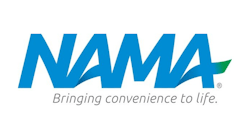(CHICAGO) -- December 12, 2014 -- On Friday, the U.S. Mint provided its recommendations surrounding the metallic content of coins, mandated by the Coin Modernization, Oversight and Continuity Act. The findings recommend no change that impacts the industry’s acceptance of current or future circulating coins, a sizable victory for the vending and refreshment services industry and all coin-accepting industries.
“This is a win-win for industry, government and consumers. We’ve helped lead the process, collaborating with the U.S. Mint, stakeholders and our members for over five years on this issue. NAMA’s grassroots efforts have paid off and we thank the U.S. Mint for their willingness to work together,” said Carla Balakgie, NAMA President and CEO.
“The recommended changes to the metallic content of the nickels, dimes and quarters could have had a significant, potentially devastating, cost to the industry and its consumers, with some estimates as high as $3.4 billion. I would like to personally acknowledge the 800-plus NAMA members and coin-operated stakeholders who made their voices heard by the Mint – you made the difference,” according to Balakgie.
The Mint’s 2014 Biennial Report, which cites NAMA’s participation and data provided throughout, was presented to Congress Friday. Here are the conclusions:
1. There are no alternative metal compositions that reduce the manufacturing unit cost of the penny below its face value.
2. Based on the response from coin industry stakeholders, the estimated industry cost ($2.4 billion to $6 billion) to accommodate an alternative metal for circulating coins that incorporates a change to the weight or EMS (electro-magnetic signature) characteristics far exceeds the estimated annual government savings ($46 million to $57 million)
3. The coin industry stakeholders overwhelmingly recommended no change to the quarter.
4. The Mint does not recommend the use of copper-plated zinc or tin-plated copper-plated zinc for circulating coins with a face value equal to or exceeding five-cents. In addition, the Mint does not recommend the use of multi-ply-plated-steel or nickel-plated steel for circulating coins with a face value equal to or greater than twenty-five cents.
5. Based on the coin industry response as well as the Mint’s R&D results, the Mint should evaluate the potential cost savings ($5.25 million annually) of alternative metal compositions that meet the seamless criteria of no change to the weight or EMS characteristics for circulating coins and its corresponding effect on the coin stakeholders.
For a complete copy of the U.S. Mint’s Biennial Report, click here: http://www.usmint.gov/about_the_mint/PDFs/2014-rd-biennial-report.pdf
“As Chair of NAMA’s government affairs committee and a vending operator who has been actively involved in relaying our message to the Mint, I am very pleased with this result. This is another great example of NAMA’s grassroots efforts producing a positive outcome, delivering measureable financial savings for the industry and our customers,” said Jeffery Smith, President/CEO of All Star Services, Inc.
“I am excited that the Mint may have discovered savings for the government in their research and development that won’t have a negative impact on the acceptance of coins by our industry. Savings for the government with no impact on industry was the intent of the original legislation. We look forward to assisting the Mint and Congress as they continue to evaluate potential cost-saving measures,” continued Smith.
Founded in 1936, NAMA is the association representing the $42 billion U.S. vending and refreshment service industry. With more than 1800 member companies – including many of the world’s most recognized brands – NAMA provides advocacy, education and research for its membership. Visit NAMA on Facebook, Twitter and LinkedIn.








